Norway’s North Cape is a major tourist attraction in the Arctic region of the country. Here’s everything you need to know to plan an enjoyable visit.
Even though it’s not technically Norway’s northernmost point, the remote clifftop has attracted visitors for far longer than most people realise. Today, it’s one of the most popular tourist attractions in all of Northern Norway.
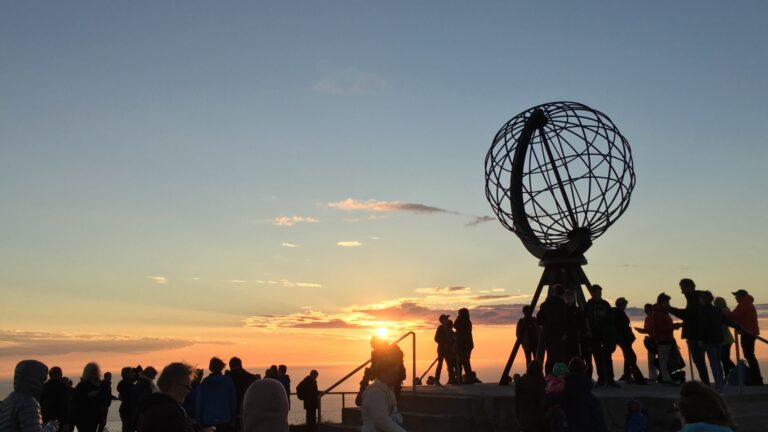
I’m always torn about visiting the North Cape, or Nordkapp, as it’s known in Norwegian. On the one hand, it’s a tourist trap. On the other, it’s one of those ‘I’ve been there’ places with a genuine feeling of being on top of the world.
North Cape Travel Resources: Search for accommodation in and around Honningsvåg – Book independent tours from Honningsvåg to the North Cape
Much of that is due to the drive there and the fantastic view to the northern horizon, if the clouds and fog stay away of course.
Whether the trip to North Cape is worth it, I’ll leave up to you. My thoughts are here. If you are planning to visit, there’s a lot of information that’s handy to know beforehand.
So, having visited several times in both the summer and the winter, read on for my North Cape travel guide.
Norway’s Northernmost Point?
First of all, what exactly is the North Cape? Physcially, it’s a monumental clifftop rising about 307 metres above the Arctic Ocean.
It represents not just a geographical landmark but also a symbol of remote beauty and the enduring allure of the Arctic. It’s located on Magerøya island in Northern Norway, within Finnmark county.
This place is often mistaken as the northernmost point of Europe. However, that title technically belongs to nearby Knivskjellodden, a peninsula that extends a little further north, but lacks the same accessibility and iconic status as Nordkapp.
Attractions at the North Cape
So, what is there to see and do at the plateau, aside from bragging rights as to having been there? Well, as it turns out, there is quite a lot more than you might think.
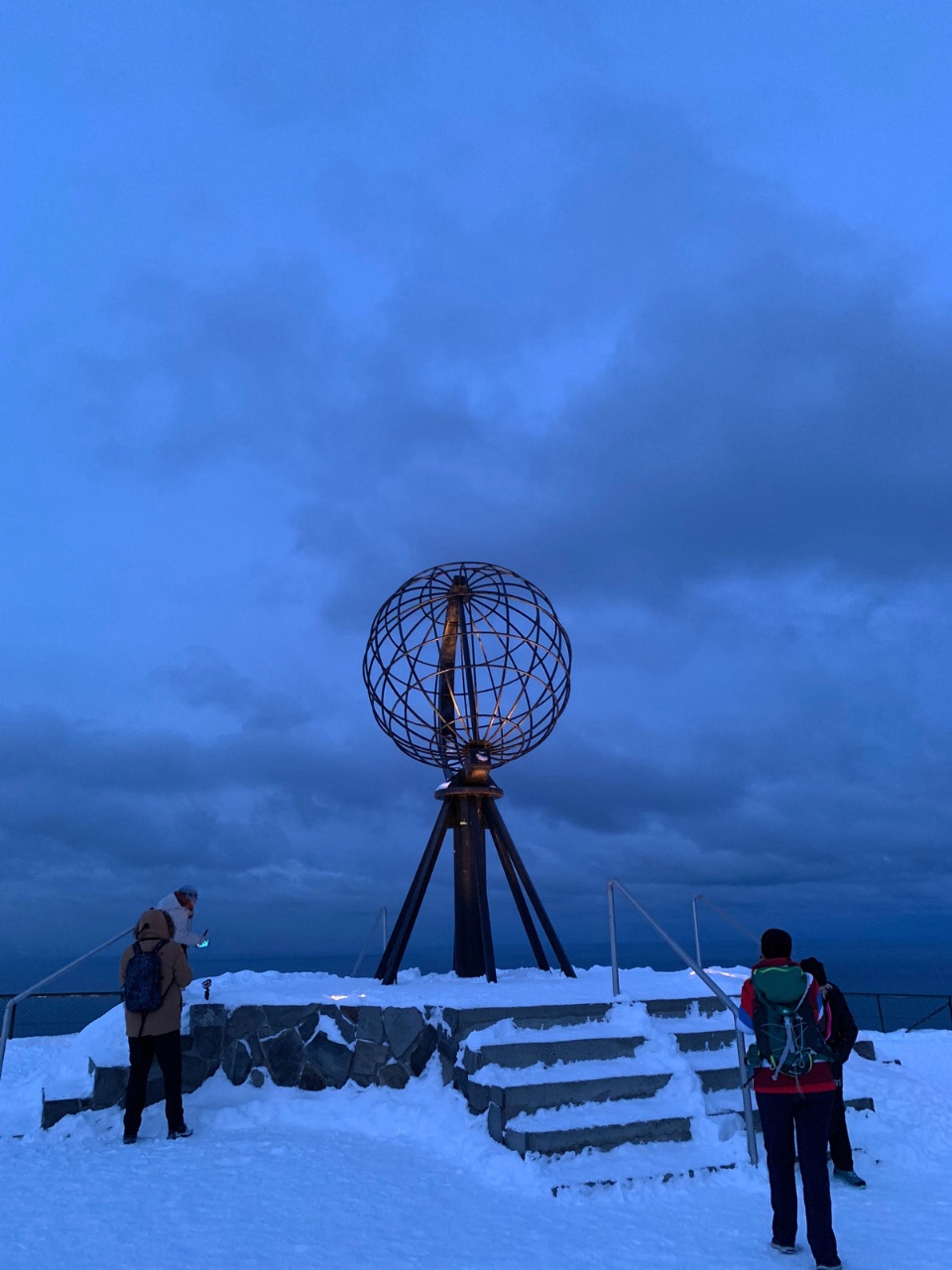
Globe Monument: Standing almost at the edge of the clifftop, this iconic sculpture has become a symbol of the North Cape and is one of the most photographed spots.
When tour buses arrive, the monument gets very busy, so you may prefer to wait until just before you leave to get photographs. However, there’s always a risk of a sudden change in weather, which can leave the view beyond the monument covered with fog.
North Cape Hall: The visitor centre is much bigger than it first appears as it is built into the rock, with several underground levels. Allow plenty of time to explore everything inside.
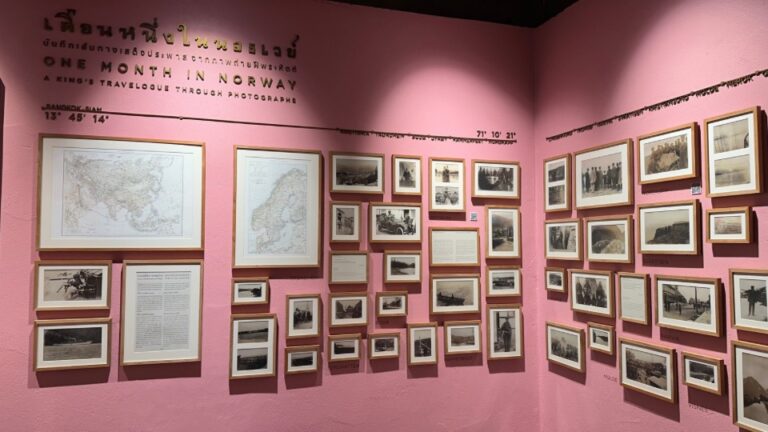
You’ll find a cinema showing a panoramic film about the region through all four seasons, and an exhibition showcasing some of the birdlife you might see.
A small chapel, a variety of exhibitions, a cafe, and a gift shop that must surely be one of Norway’s biggest are among the other attractions. Don’t miss the small photographic exhibition that documents the visit of Thai Royalty to the North Cape.
Sculptures: There’s plenty more to see out on the cliff other than the globe sculpture, so do make time to see it all.
Most notably, the eye-catching monument ‘Children of the World’ is a great place to start. It can be found to the right of the visitor centre as you arrive.
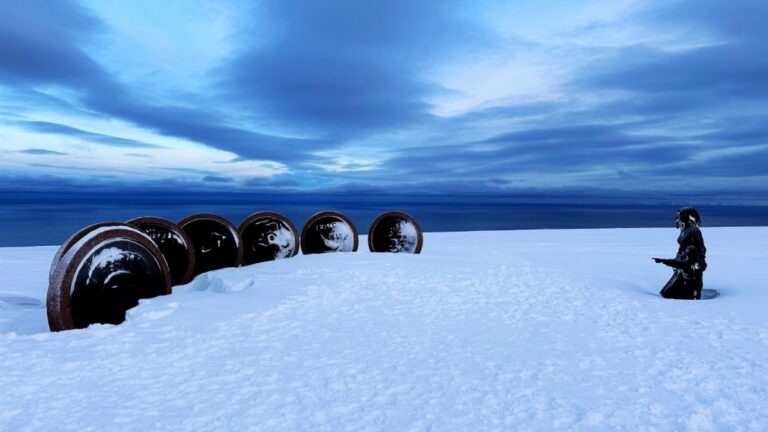
The sculpture features seven bronze discs based on clay reliefs made by seven children from different countries, symbolizing friendship, hope, joy, and working together.
Other notable monuments include a milestone, and a granite column commemorating the visit of King Oscar II in 1873.
Travel Options to the North Cape
No matter your choice of transport, getting to the North Cape is an adventure in itself. The usual base of operations for people visiting the Cape is the small town of Honningsvåg.
Many people arrive in Honningsvåg by car, cruise ship, or on the Norwegian coastal route. Despite the town’s small size, Honningsvåg Airport offers another travel option thanks to the small propellor planes of Widerøe.
Drive Yourself: The journey from Honningsvåg to the plateau on Magerøya island offers stark contrasts between seasons, turning from desolate in summer to a winter wonderland.
The winding road provides stunning coastal views, cabins, and even a beach that locals have nicknamed ‘Copacabana’. The drive takes around 35 minutes in good conditions.
Cruise Line Excursion: If you arrive in Honningsvåg on the Norwegian coastal route or a cruise ship, you’ll find at least one official excursion offered.
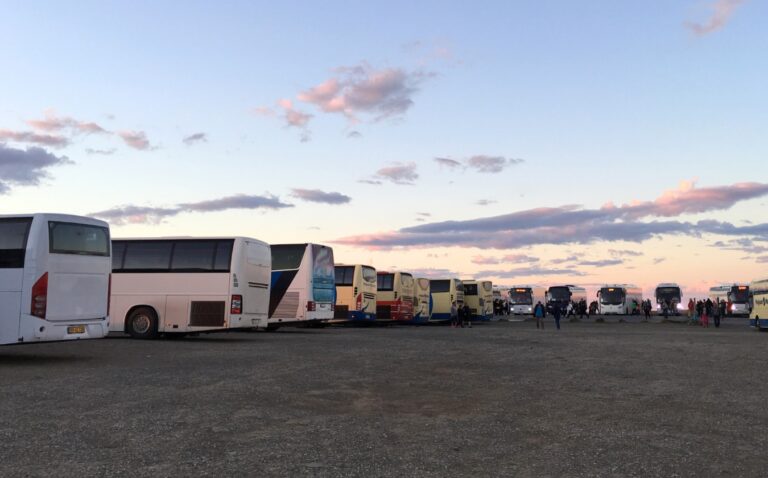
On Hurtigruten or havila, this consists of a guided bus trip, free time of between 60 and 90 minutes at the plateau and visitor center, and the return transport. Cruise line excursions may include other highlights of Magerøya island too.
Independent Bus Tour: Bus trips to the North Cape are also available from other providers, including at the pier.
These can be as much as half the price of the official excursions, but bear in mind that you are responsible for getting back to the ship on time. This is perhaps more relevant for travellers taking the coastal route, as the time in Honningsvåg is more limited.
Independent options include private tour operators such as North Cape Tours or booking a private trip with a local taxi company.
Local Bus Option: Local bus 406 offers return bus travel to the North Cape during the summer, with times that correspond to the Hurtigruten and Havila coastal ferries.
North Cape in the Winter
Although the majority of tourists choose to visit in the summer to enjoy the experience of standing on the cliff under the midnight sun, it’s possible to visit the North Cape year round, as long as the weather and snow conditions allow it.
Driving across Magerøya island to the North Cape in the winter, while enticing, demands careful consideration due to rapid weather changes and the risk of whiteouts from snowdrifts, as the island lacks trees.
Despite continuous snowplow efforts, risks remain. Convoy driving during severe weather can cause significant delays, and extreme conditions may lead to road closures between Honningsvåg and the North Cape.
Have you been to the North Cape? I’d love to hear your thoughts, experiences, and travel tips down in the comments.


I just visited the Nordkapp for the first time since I started working here as a Tour Guide. What fascinates me is to see it in all kind of weather conditions, e.g. mystical and foggy, icy and windy or calm and sunny.
The people coming here are excited and I try to educate them as much as possible — and yes, I’m telling them about the real most northern point on the island too.
Other than that my feelings are similar to yours. I’m even more excited about a hike to Knivskjelodden!
I visited in 2018. I was intrigued by the construction below ground. I haven’t been able to find out much about it’s history online. Presumably built with a military purpose in mind? But when? And when did that use cease?